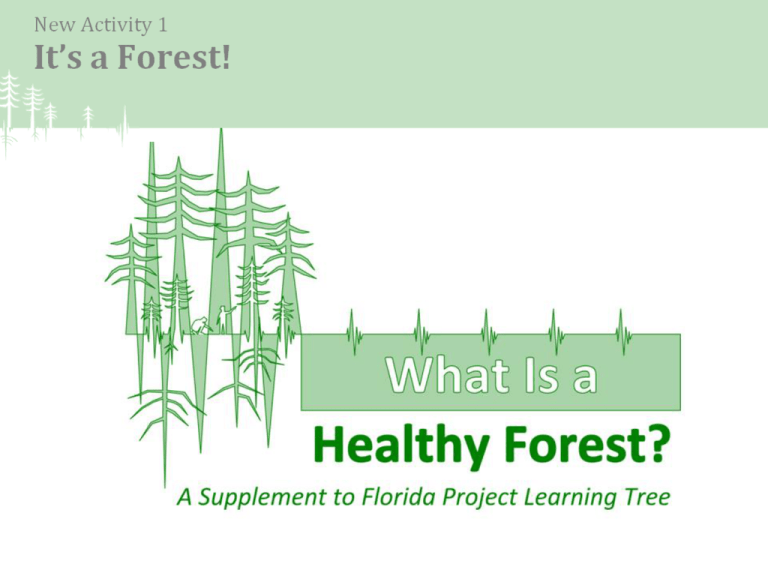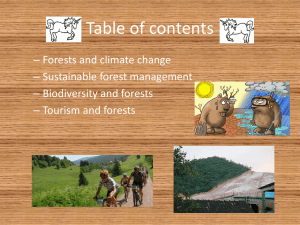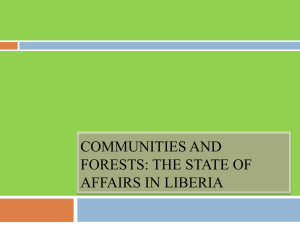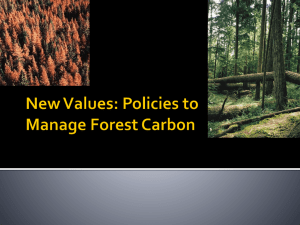What Is a Forest? - School of Forest Resources & Conservation
advertisement

What do you think of when you hear, “forest”? What do you think of when you hear, “forest”? A place with trees A place where I hunt Defining a Forest • Forests vary in size, composition, and function •People use forests in many ways too so their definition of what is a forest can all be different •The people who use a forest and who value it are called stakeholders •Defining a forest when they look so different and when there are many stakeholders can be hard Defining a Forest •The Food and Agricultural Organization (FAO) says that a forest is land -that is a little bigger than 1 acre in size -where the trees cover at least 10% of it -and the trees can grow to be at least 16 feet tall Defining a Forest •But the FAO definition of a forest isn’t complete •What else is in a forest other than just trees? What else is in a forest other than trees? Shrubs Wildlife Decomposers Soil People Categorizing Forests • Forests can be categorized by their environmental conditions - ex. climate, elevation, soil, amount of water • Or by what lives in the forest- ex. types of trees, birds, fungi, mammals, people, insects • And by how they’re used – ex. for timber, to get food from, for recreation, or for wildlife Benefits Forests Provide • Despite differences in the environmental conditions in a forest, what lives in a forest, and how it is used, all forests provide services that you and I benefit from everyday. • Can you think of any good things forests do? Benefits Forests Provide • Forests provide shade, clean air for us to breath, clean water for us to drink, return nutrients to the soil, and provide habitat for other plants and wildlife • These things forests provide are called ecosystem services • All forest types provide ecosystem services! Now that we know what makes up a forest and what they do for us, let’s explore the different forest types … Types of Forests 1. Natural Forests 2. Plantations 3. Urban Forests Natural Forests • These types of forests are usually conservation areas for wildlife, ecosystem services and wildlife • Sometimes trees in natural forests are harvested but young trees will grow from seeds left on the ground and take their place • Natural forests provide green areas for many people to enjoy • Have you ever visited a natural forest? An Example of a Natural Forest Plantations • These are forest that are specifically planted to make products people use • Examples of products include paper, wood, fuel, oranges, and pecans • Plantations are usually planted in rows for easy access and are privately owned • Plantations are usually less diverse than natural forests An Example of a Plantation Urban Forests • These forests are planted or left standing in developed areas such as in neighborhoods or cities • Human benefits are the primary purpose of urban forests • These benefits include providing cool shade, beauty, and taking up water after it rains • Is there an urban forest near your school or where you live? An Example of an Urban Forest Now let’s review what you’ve learned by playing a quick game! Name the Forest Type! Name the Forest Type! Name the Forest Type! Name the Forest Type! Here is a harder one Name the Forest Type! Here is a harder one Excellent Job Naming those Forest Types! • You are now prepared to do a fun activity to explore forests and apply what you learned • Be ready to share your pictures of forests that you brought to class with your friends Strengthening the pulse of Florida’s forests, together









